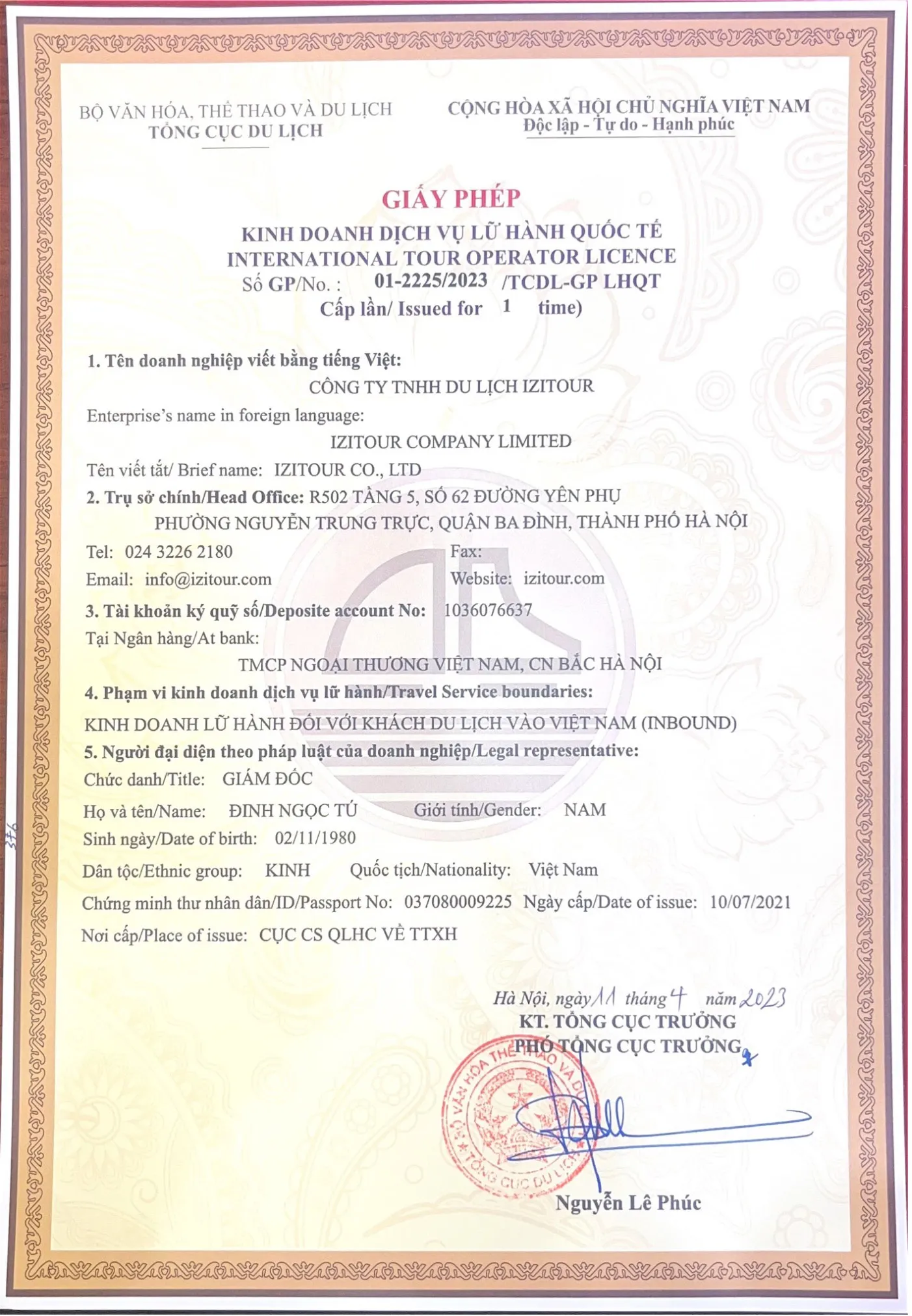Thieu Tri's tomb, also called Xuong Lang, is a well-known burial place in the Hue ancient capital. On 11 December 1993, Thieu Tri's tomb was honoured to be recognised by UNESCO as a world cultural heritage site. What makes this resting place of the Nguyen dynasty's third king, known for his respect and skills, so special? Let's explore the tomb of King Thieu Tri with Izitour!
Thieu Tri's Tomb is thought to share many similarities with the tomb of King Gia Long and tomb of King Minh Mang - the father of king Thieu Tri. However, it has its own special and distinct characteristics that make it stand out in the ancient capital. The use of blue enamel decoration is prominent in the mausoleum, particularly in the worship area. French researcher Mr. G. Langland described Thieu Tri's Tomb as one of the most unique masterpieces of Vietnamese art in the 19th century.
Location and entrance fee to Thieu Tri's tomb

Address: Cu Chanh village, Thuy Bang commune, Huong Thuy district, Thua Thien Hue province
Entrance ticket price:
- Adult: 150,000 VND / round
- Children aged 7 to 12 years or 0.8m to 1.3m tall: 30,000 VND/ ticket
- Children under 7 years of age or less than 0.8m in height are completely free of charge
The tomb of Thieu Tri, the third king of the Nguyen dynasty, is quietly located between hills and mountains. Unlike other tombs of Nguyen dynasty’s kings, only Xuong Lang was constructed in the northwest direction, which was rarely chosen for building palaces and mausoleums.
How to get to Thieu Tri's Tomb?
Thieu Tri Mausoleum is around 8 km away from Hue city centre. You can go there by motorbike or taxi. If you take a motorbike, just follow the route: Dien Bien Phu - Dan Nam Giao. From Dan Nam Giao, continue driving 4 km to reach Thieu Tri mausoleum.
Currently, in the central area of Hue city, there are many shops offering daily motorbike rental services with prices ranging from 150,000 VND to 200,000 VND depending on the type of vehicle you choose. All you have to do is contact the shop in advance and they will deliver the motorbike to your hotel.
Or if the typical sweltering Hue heat makes you a little tiring when travelling long distances, why not choose a taxi? Currently, there are many taxi companies in Hue that operate a team of high-class luxury cars with friendly, enthusiastic and welcoming service. The taxi companies you can trust to choose as your companion while travelling are Mai Linh taxi, Phu Xuan Hue taxi, Vinasun Hue taxi, Thanh Cong Hue taxi, Huong Giang taxi, Hoang Anh taxi, etc. . You can book a car by calling the company's phone number directly or booking via the app (depending on the company).
Another way to visit Thieu Tri tomb is booking Hue tours with a local tourist guide. You can make use of your day to explore the most interesting attractions in Hue.
Tomb of King Thieu Tri and its process of building
Known as Nguyen Phuc Mien Tong, King Thieu Tri (1807 - 1847) was the third king of the Nguyen dynasty and the eldest child of King Minh Mang. He reigned for only seven years before passing away on November 4, 1847, at the age of 47 due to illness. During his lifetime, he didn't plan to construct a tomb. When he died, his body was temporarily placed in the Long An Hall within the Bao Dinh Palace for 8 months. As he was about to pass away, he told his son, King Tu Duc, to build a mausoleum for him. He advised selecting a suitable spot at the mountain's base for easy access. He also recommended imitating the underground passage used for Hieu Lang (Minh Mang's tomb). He suggested not overspending on temples and military resources when constructing the palace simultaneously. After King Tu Duc took the throne, he fulfilled his father's wishes and built a mausoleum for his father.
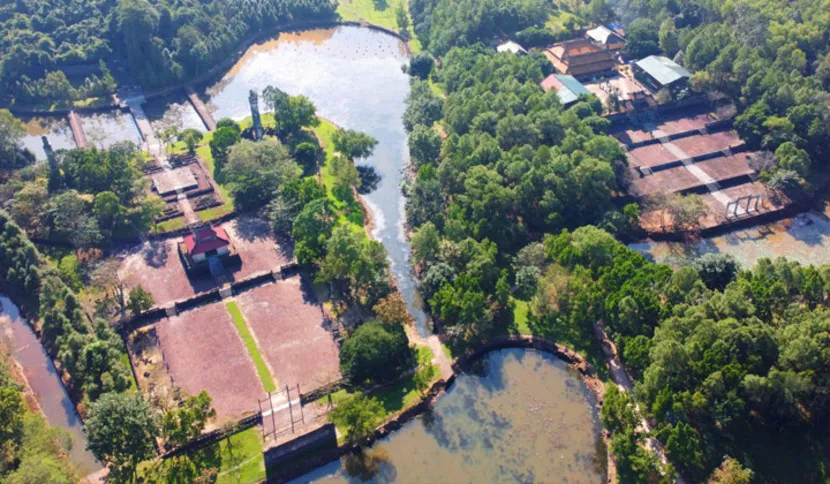
King Tu Duc had a geography master find good land to build a mausoleum. He chose a low range mountain in Cu Chanh village, Huong Thuy district. This mountain was later called Thuan Dao Mountain, and the mausoleum was named Xuong Lang. Unlike other palaces and temples, the mausoleum faced northwest, which was so rare. However, based on feng shui principles, Thieu Tri’s tomb had a good direction. Its location was enhanced by Vong Canh hill, which was about 1 km away, and Ngoc Tran mountain on the left side, across Huong river, creating an ideal setting. The mausoleum was also supported by natural features like Cham mountain, around 8 km away, and the nearby Bau Ho cave.
As per his father's final wishes, King Tu Duc instructed his advisors to replicate the road construction method used for Minh Mang's mausoleum when transporting his coffin. Building important structures like palaces, communal houses, and temples should adhere to the guidelines set by Gia Long's mausoleum. The speed at which Thieu Tri's tomb was constructed was exceptional, as it was accelerated under the direct encouragement of King Tu Duc.
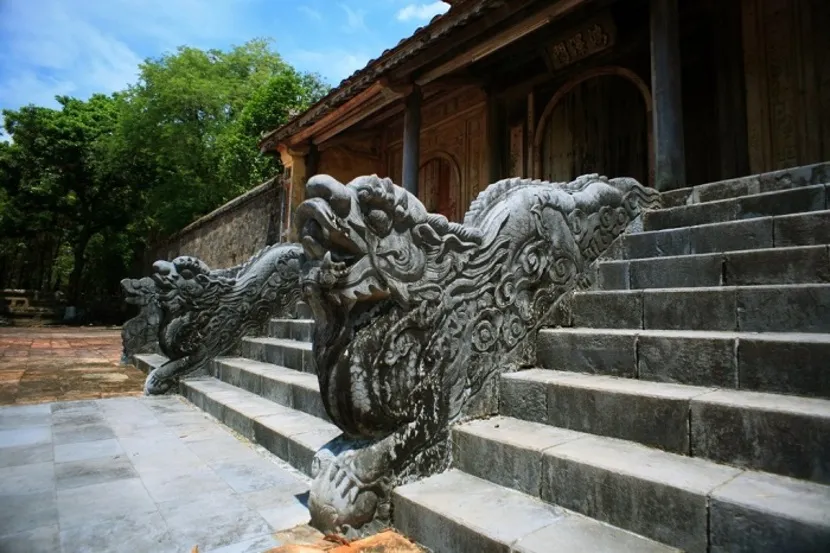
The building of the mausoleum started on February 11, 1848. By March, they finished making a tunnel like the one in Minh Mang's Tomb to move the king's coffin inside. In May, they finished the main part of the mausoleum. On June 14, 1848, King Tu Duc came to see the complex for the final time. After ten days, they placed King Thieu Tri's body in the mausoleum, where he was buried after being in the Bao Dinh Palace for eight months.
Ancillary structures within the mausoleum were continuing to be constructed after the king's body was fully laid to rest. In November 1848, the 'Thanh Duc Tran Cong' stele was placed, carrying a 2,500-word inscription by King Tu Duc that honoured his father's life and achievements. This tablet stands as the final addition to the mausoleum, completed remarkably quickly in less than 10 months, making it the mausoleum constructed in the shortest time in its history.
Majestic architecture of Thieu Tri's Tomb
Thieu Tri's mausoleum has two main parts: the Truc Lang area on the right and the Truc Tam area (shrine area) on the left. While Minh Mang Tomb combined three axes of Gia Long’s tomb into one, Thieu Tri Tomb blends the two designs using two separate axes.
4.1. Mausoleum area in Thieu Tri’s Tomb
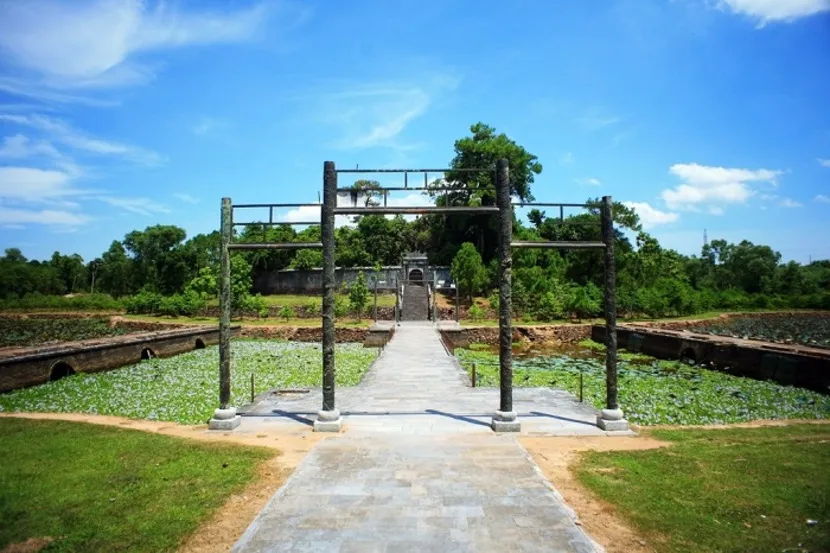
The main mausoleum is situated on the right side of the tomb and has a captivating position. It's near the front of the Nhuan Trach Lake, which connects to the Dien Lake. On its back side, there's a gate and back wall intricately carved with a dragon surrounded by clouds, which leads to the Bai Dinh.
In the large courtyard are two rows of stone statues. These statues show the art of making statues from the early 19th century in Hue. If you look back, right by Nhuan Trach Lake, there's a bronze ceremonial gate that takes you to the large Bai Dinh courtyard.
Right behind Bai Dinh are Bi Dinh and Duc Hinh Pavilion, which are on a hill that looks like a turtle shell from far away. Next to the Bai Dinh courtyard, there are two lines of stone statues depicting mandarins, horses, and elephants. In the Bi Dinh area, also called Phuong Dinh, you can find a statue of 'Thanh Duc Tran Cong' with over 2,500 words written by King Tu Duc about his father's life and achievements.
4.2 Worship area of Thieu Tri Mausoleum
The Tam (worship area), also known as the shrine, is built in a distinctive style and is located about 100 metres from Duc Hinh Pavillion on the left. Duc Hinh Pavilion was built on a low hill in the shape of a turtle shell, similar in appearance to Minh Pavillion in Minh Mang's tomb. Unfortunately, today Duc Hinh Pavilion collapsed, only the base and steps remain.
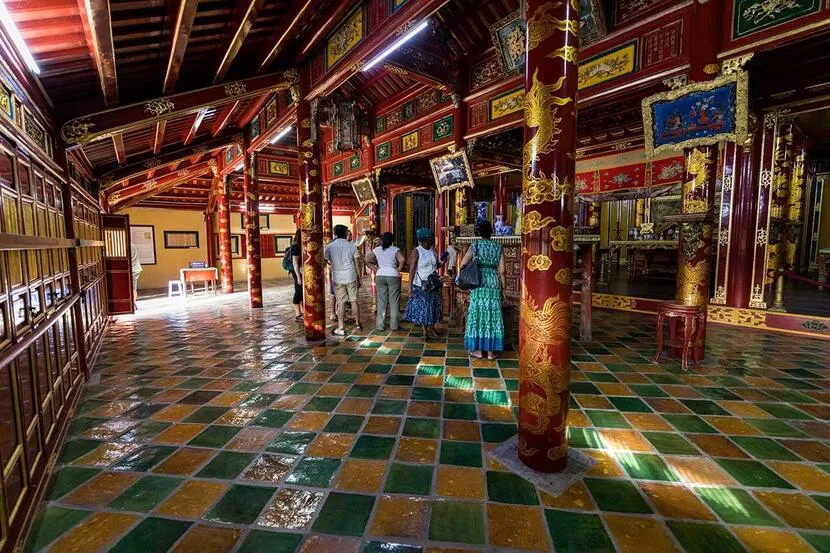
Behind Duc Hinh is a flower garden built symmetrically on both sides, just like the flower garden in Minh Mang's tomb. Then there is a lake in front of Buu Thanh and there are three bridges crossing it, including the Chanh Trung bridge in the middle, the Dong Hoa bridge on the right and the Tay Dinh bridge on the left. All three bridges have an end point leading to Buu Thanh, where the body of King Thieu Tri is located.
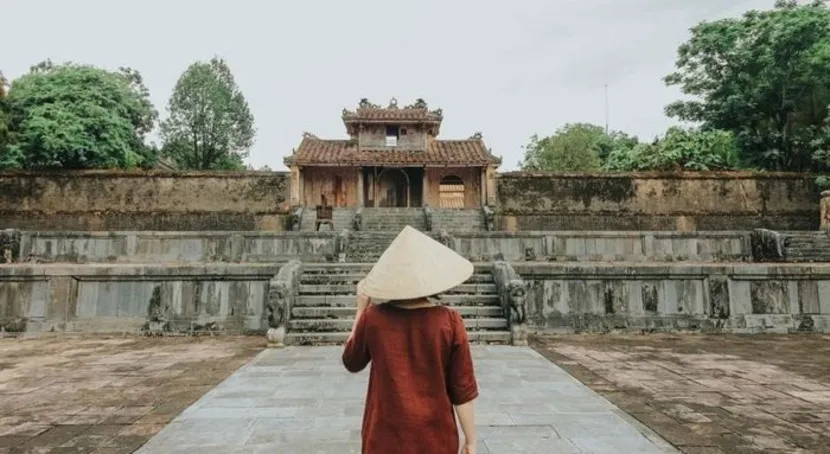
In addition, in the Tam area near Thieu Tri's tomb, there are other structures such as Nghi Mon built of marble, Hong Trach Gate - a gazebo-shaped gate leading to the Bieu Duc palace. This is the central work in the Tam area, and is also the place of worship for King and Queen Nghi Thien Chuong (Mrs. Tu Du). In the main hall are ancient matches and on the roof are 450 inscriptions with poems of high literary and educational value.
In addition to the two main areas, in the Thieu Tri's Mausoleum, there are other auxiliary works such as Ta Huu Pho Dien, Ta Huu Tung Dien with the Bieu Duc Palace in the middle, which contribute to the noble appearance.
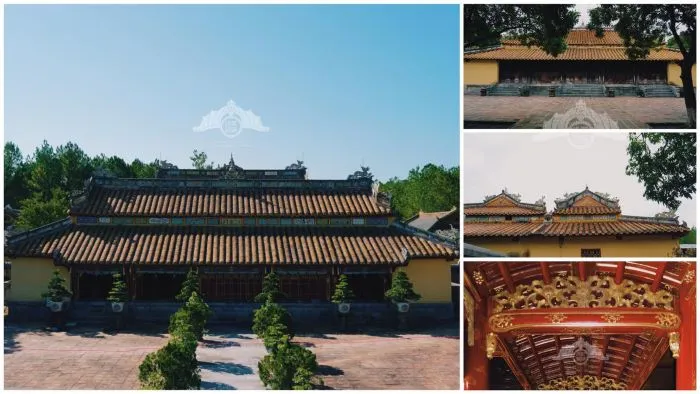
Bieu Duc Palace
Beyond the Mausoleum of Thieu Tri lies the tomb of Hieu Dong, where the king's mother, Madam Ho Thi Hoa, was buried. Behind the mausoleum, on the left side, is the Xuong Tho mausoleum of the king's wife, Mrs. Tu Du. Across from the main mausoleum, you'll find the Tao Thuong tombs area, where the young princes and princesses, King Thieu Tri's children, are laid to rest.
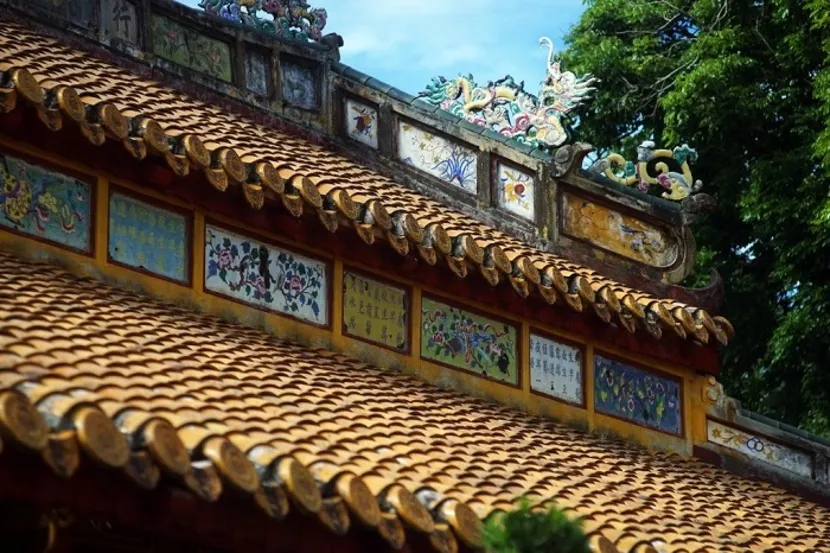
King Thieu Tri's mausoleum stands out among many other mausoleums for its charming countryside scenery, with vibrant gardens and picturesque rice fields. Built in just 10 months, however the mausoleum's stunning design and artistry have made it a renowned sightseeing spot in Hue. Though the majority of the mausoleum have not remain intact up till now, the space is excellent. If you have a chance to visit Hue on a sunny day, make sure to visit one of the mausoleums devoted to the Nguyen dynasty king.
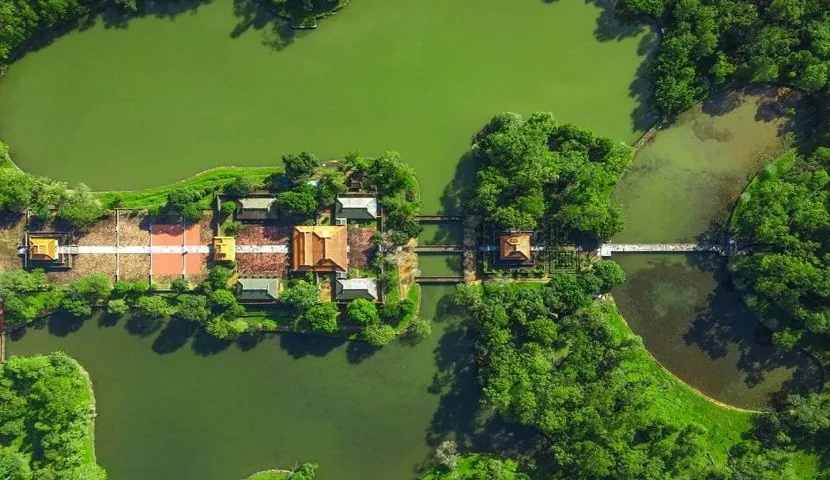






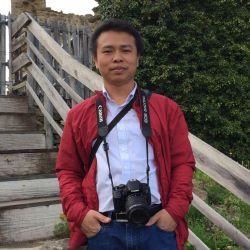
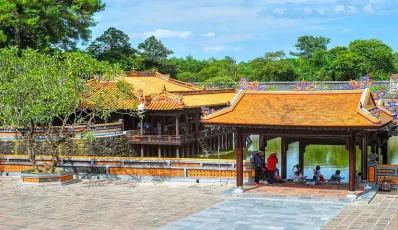


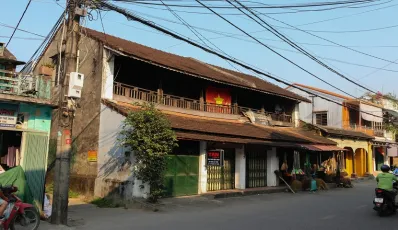
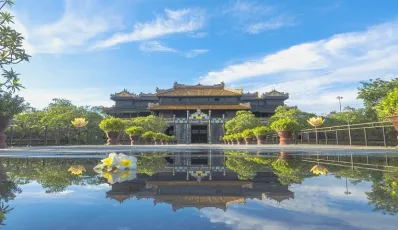

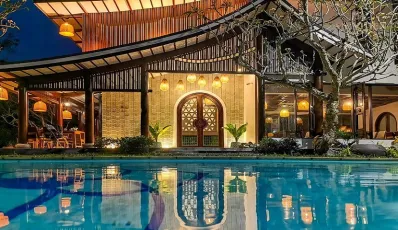

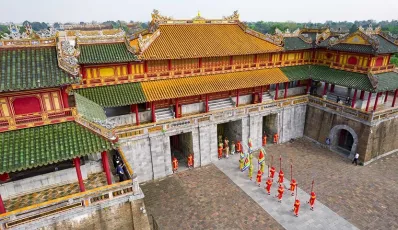

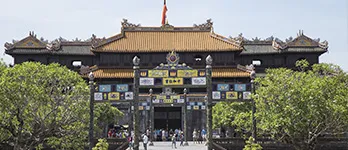


 TRAVELERS' CHOICE 2025
TRAVELERS' CHOICE 2025 